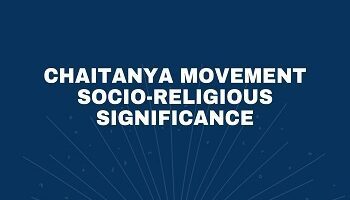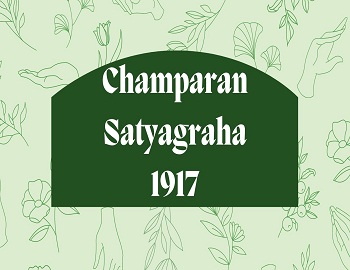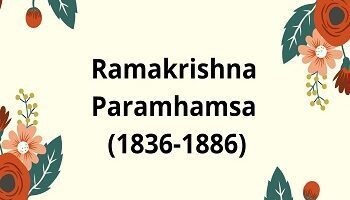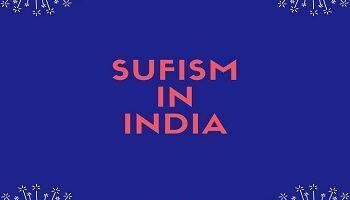Table of Contents
Mughal Empire Important Facts:
Zahiruddin Muhammad Babur (1526-1530):
- A descendant of Timur on his father’s side and of Chengiz Khan on the side of the mother.
- Mughals called themselves as Timurids.
- He was born in 1483.
- Babur ascended the throne at Farghana, a small principality in Transoxiana, in 1494 after the death of his father Umar Shaikh Mirza.
- His great ambition was to occupy Samarkand the capital of Timur which he twice seized and could not retain, owing to the hostility of the Uzbeg chiefs.
- He also lost Farghana to the Uzbegs.
- On account of his precarious position in Central Asia, he, after crossing the Indus, invaded India five times.
- The first real expedition took place in 1519 when he captured Bhera, and the fifth was the defeat of Ibrahim Lodi in the First battle of Panipat in April 1526.
- He was invited to India by Daulat Khan Lodi, the Governor of Punjab and Alam Khan an uncle of Ibrahim Lodi.
- Conquest of India (1526-1530 A.D.):
- The First Battle of Panipat (1526) defeated Ibrahim Lodi.
- Battle of Kanwaha/ Khanua near Agra (1527) defeated Rana Sanga.
- Battle of Chanderi (1528) defeated Medini Rao of Malwa.
- The battle of Ghagra in Bihar (1529) defeated the Afghans.
- Babur’s first ruler to entitle himself as “Badshah” also “Emperor of Hindustan” after the First Battle of Panipat.
- Babur’s success in the First Battle of Panipat was due to his cavalry and artillery. It was first used by Babur. His artillery led by Ustad Ali and Mustafa.
- His warfare method- Tuluguma Tactics learned in Central Asia.
- After the battle of Khanwa- Babur took the title of Ghazi.
- Died at Agra on 26th December 1530.
- Buried in Arambagh and later shifted to Kabul.
- Babur great scholar in Arabic and Persian languages. Turki was his mother tongue.
- He wrote his Autobiography Tuzuk-i-Baburi or Baburnamah in Chagatai Turk language.
- Baburnamaha translated into Persian by Abdur Rahim Khan-i-Khana.
- Baburnamah translated into English by Madam Bebridge.
- After Kushanas, he was the first to bring Kabul and Kandhar into Indian Empire.
- In the words of Dr.V.A.Smith, ” Babur was perhaps the most brilliant Asiatic prince of his age and worthy of a high place among the sovereign of any age or country.”
Humayun (1530-56):
- Divided the empire among his brothers-
- Kamran– Kabul and Kandhar.
- Hindal– Alwar, Mewar.
- Askari– Sambhal.
- Defeated by Afghans under Sher Shah Suri.
- Battle of Chausa near Buxar in 1539 A.D.
- Kanauj in the Battle of Bilgrama– 1540 A.D.
- 1540-54 – the year of exile.
- It was during his exile that he met Hamida Bano, whom he married and who later gave birth to Akbar at Amarkot.
- At Amarkot, Humayun also met Bairam Khan who became his trusted friend and later the guardian of Akbar.
- Humayun came back after 15 years in exile, captured Lahore 1555 A.D., and defeated Afghans near Sirhind 1555 A.D.
- Built a new city Dinpanah.
- The masters of miniature painting, Abdu’s Samad and Mir Sayyid Ali, who had come to India from Central Asia along with Humayun inspired Indian painters.
- Gulbadan Begum, his sister wrote Humuyun Namah.
- He died due to his fall from his Library building stairs ( Sher Mandal, Delhi).
- Mausoleum of Humayun in Delhi- Double dome structure.
Akbar (1556-1605):
- At the time of his father’s death, Akbar was merely 14 years old.
- Akbar was coronated at Kalanaur.
- Hemu energetic Wazir of Muhammad Adil Shah of Bihar occupied the country from Bayana to Delhi including Agra and assumed the title of Vikramaditya.
- Akbar defeated Hemu in the Second Battle of Panipat 1556.
- During the first five years of Akbar’s reign, Bairam Khan acted as his regent. He consolidated the Mughal empire. After five years he was removed by Akbar due to court intrigues and sent to Mecca. But on his way, Bairam was killed by an Afghan.
- 1561– Malwa conquered from the musician sultan Baz Bahadur, later honored his skill as a musician and enrolled him as Mansabdar.
- 1562– his first pilgrimage to the shrine of Khwaja Muinuddin Chisti at Ajmer.
- 1562– Raja Bharmal of Amber proposed his eldest daughter’s marriage with the emperor. This led to the Mughal-Rajput alliance.
- 1563– Chandrasen, the ruler of Marwar, submitted to Akbar.
- Rana Udai Singh of Mewar refused to accept the Mughal-Rajput alliance.
- 1567-68– siege the fort of Chittor by defeating Rana Udai Singh.
- 1569– Fall of Ranthambore.
- 1570– Submission of Marwar and Bikaner.
- 1572– won Gujarat. To commemorate his victory, he builds Buland Darwaja at Fatehpur, Sikri.
- Battle of Haldighati– 18 June 1576 – Mughal Army led by Rana Man Singh of Amber won the battle by defeating Rana Pratap Singh.
- Except for Chittor and Mandalgargh, Rana Pratap virtually the master of the whole of Mewar.
- Conquest of Bihar, Bengal, Orissa largely goes to the credit of Raja Man Singh.
- Suppressing Yusufzai and Mandar tribes, Raja Birbal was killed.
- 1586– after the death of Muhammad Hakim (half brother of Akbar), Kabul annexed to Mughal Empire.
- 1586– Kashmir was annexed.
- 1593– whole Sind conquered.
- 1594– Kandhar conquered from Persia.
- In Deccan, only Raja Ali Khan of Khandesh accept Mughal suzerainty.
- 1601– Asirgargh proved to be the last conquest of Akbar’s life.
- Jharokha Darshan started by Akbar.
- Akbar given the Mughal India one official language- Persian.
- Akbar abandoned the Islamic theory of Taxation.
- Akbar made some experiments in the land revenue administration with the help of Raja Todar Mal. The land revenue system of Akbar was called Zabti or Bandobast system. It was further improved by Raja Todar Mal. It was known as Dahsala System which was completed in 1580.
- Abul Fazl was the author of Akbarnamah, an account of Akbar’s life. Ain-i-Akbari, a part of this book deals with the revenue system and the laws prevalent in those days.
- Akbar established painting karkhana headed by Abdus Samad.
- Daswant and Basawan were famous painters of Akbar’s court.
- Akbar died after an attack of dysentery in 1605.
- Akbar buried at Sikandra near Agra.
Akbar Liberal Measure:
- 1562– Prohibition on the enslavement of prisoners of war and their forceful conversion to Islam.
- 1563– abolished Pilgrim tax.
- 1564– abolished Jaziya.
Akbar Religious Policy:
- Main factors responsible for his religious ideas were–
- His early contacts with the Sufi saints.
- The teachings of his tutor Abdul Latif.
- His marriage with Rajput women.
- His association with intellectual giants like Shaikh Mubarak and his two illustrious sons – Abul Faizi and Abul Fazl.
- His ambition to establish an empire in Hindustan.
- In 1575, he ordered the construction of Ibadat Khana (House of worship) at his new capital Fatepur Sikri. His religious discussions were held every Thursday evening. At first, these were confined to Muslims only, but he was soon disillusioned as these discussions often brought to the fore the violent intolerance of the Sunnis and the Shia-Sunni differences.
- In 1578, he converted the Ibadatkhana into a ‘Parliament of Religion‘ because he realized that religious discussions could not be fruitful without a broad base.
- He threw the Ibadatkhana open to Hindus (Purushottam Das), Jains (Harivijaya Suri) , Zoroastrians (Maharaji Rana), and Christians (Monserrate & Aquaviva).
- He disliked the interference of the Muslim Ulemas in political matters.
- In 1579, he issued the “Infallibility Decree” or “Mahzar” by which he asserted his religious powers. It was signed by five ulema or theologians, which made Akbar the supreme or final arbiter in religious matters and replaced the power of the ulema by the power of the emperor.
- Mahzar was drafted by Shaikh Mubarak.
- In 1582, he promulgated a new religion called Din-i-Ilahi or Jauhind-i-ilahi or Divine Faith or Divine Monotheism. It had no well-defined theology or philosophy but required belief in one supreme God.
- The basic purpose of the formulation of Din-i-Ilahi was Sul-i-Kul or universal harmony.
- As Monserrate, a contemporary of Akbar said: “His God was not the God of the Muslims alone. He worshipped the God of all men.”
- However, his new faith proved to be a failure. It fizzled out after his death. Even during his lifetime, it had only fifteen followers including Birbal. Akbar did not compel anyone to his new faith.
Mansabdari System:
- It was of Central Asian origin.
- The mansabdari system introduced by Akbar was a unique feature of the administrative system of the Mughal Empire.
- The term mansab (i.e. office, position, or rank) in the Mughal administration indicated the rank of its holder (mansabdar) in the official hierarchy.
- Mansabdar belonged both to the civil and military departments.
- The Mughal mansab was dual, represented by two members, one designated zat (personal rank) and the other sawar (cavalry rank).
- The chief use of zat was to place the holders in an appropriate position in the official hierarchy.
- The mansabdars holding ranks below 500 zat were called mansabdars, those more than 500 but below 2500 amirs, and those holding ranks of 2500 and above were called amir-i-umda or amir-i-azam or omrahs.
- Mansabdars received pay in cash were known as naqdi.
- Those paid through the assignment of jagirs were called jagirdars.
- The mansab was not hereditary and it automatically lapsed after the death or dismissal of the mansabdar.
- Another important feature of the mansabdari system was the law of escheat (zabti), according to which when a mansabdar died all his property was confiscated by the emperor.
- The reign of Jahangir saw an important innovation in the mansabdari system, namely the introduction of the du-aspah-sih-aspah rank (literally, a trooper with two or three horses).
- During the reign of Shah Jahan, the jama-dami or value of the jagir increased in accordance with the price rise during the period.
Jahangir (1605-27):
- Born at Fatehpur Sikri.
- Proper education by his tutor Abdur Rahim Khan – i – Khana.
- Salim assumed the title of Nuruddin Muhammad Jahangir.
- Promulgation of 12 edicts or ordinances for the general welfare and better government of the country.
- He was a lover of Justice and had hung a huge bell outside the Agra fort called Chain of Justice-Bell (Zan Zir-i-Adil).
- Khusrau (eldest son of Jahangir) revolted against Jahangir in 1605 at Lahore. The rebellious prince captured, blinded, confined, and subsequently killed by Khurram (Shah Jahan) in 1622.
- Fifth Sikh Guru Arjan Dev executed for supporting Khusrau. The death of Arjan Dev infuriated the Sikhs and they turned against the Mughals.
- Jahangir got executed Abul Fazl. This is done by Bir Singh Deo Bundella.
- First military expedition against Rana Amar Singh, son of Rana Pratap of Mewar. He submitted before Jahangir in 1615.
- 1622– Occupation of Kangra under the able command of his son, Prince Khurram.
- The greatest failure of Jahangir’s reign was the Loss of Kandhar to Persia (Shah Abbas, 1622).
- 1611– Marriage of Jahangir with Mihrunnisa (the widow of Sher Afghan), daughter of Persian Mirza Ghiyas Beg.
- Jahangir conferred on her the title of Nur Mahal later changed to Nur Jahan.
- 1613– she promoted to the status of Padshah Begum, coins struck in her name.
- Nur Jahan’s father got the title Itimadudaulah and brother Asaf Khan who was the Khan-i-saman (Independent charge of the household department and karkanahs).
- Asaf Khan’s daughter Arjumando Bano Begum better known as Mumtaz Mahal married Khurram (Shah Jahan) the ablest of Jahangir’s son.
- His court visited by a representative of King James I of England, Captain Hawkins, and Sir Thomas Roe.
- Jahangir military general was Mahabat Khan.
- Pietxa Valle, a famous traveller came during his reign.
- Production of tobacco (brought by Portuguese) started in his reign.
- Jahangir issued a firman in 1613 permitting the English to establish a factory permanently at Surat.
- He wrote his autobiography Tuzuk-i-Jahangiri in Persian.
- During Jahangir’s reign Portrait painting and the painting of animals had developed. Mansur was a great name in this field.
- He was buried at Lahore (Shahdara).
Shah Jahan (1628-58):
- Also called as Khurram.
- He ousted the Portuguese from Hugli (1631) and occupied it in 1632 under Qasim Khan noble of Shah Jahan.
- 1636-37, Shah Jahan himself arrived in the Deccan and after a show of strength forced Bijapur and Golcunda to accept the Mughal suzerainty.
- In 1636, Aurangzeb, son of Shah Jahan, was appointed the Mughal viceroy in the Deccan.
- 1639– Ali Mardan Khan, the Persian Governor, surrendered Kandahar to Shah Jahan. He was suitably rewarded for his treachery and was given a high post in Mughal Administration.
- But in 1649, Shah Abbas II of Persia wrested Kandahar from the Mughals.
- Shah Jahan’s second Indian ruler to invade Central Asia.
- His reign described by French traveller Bernier and Traverier and Italian traveller Manucci, the author of Storio Dor Mogor (also called as mirror of 17th century India).
- Peter Mundi described the famine that occurred during Shah Jahan’s reign.
- Shah Jahan’s reign considered the “Golden Age of Mughal Empire“.
- 1658– Battle of Bahadurgarh– Fought between Shuja and Dara Shikoh. Shuja was defeated.
- 1658– Battle of Dharmat– combined forces of Aurangzeb and Murad join near Ujjain and defeated imperial forces (Jaswant Singh and Qasim Khan).
- 1658– Battle of Samugarh– Dara Shikoh finally lost the war of succession in this battle and fled from Agra. Shah Jahan put in prison by Aurangzeb in the Agra Fort.
- 1658– Battle of Khanjawa– Shuja was defeated and fled to Arakan.
- 1659– Battle of Deorai or Devtrai– Dara Shikoh was executed by Aurangzeb. He was later buried near the tomb of Humayun.
Aurangzeb Alamgir (1658-1707):
- Aurangzeb crowned himself as emperor in Delhi on July 21, 1658, and assumed the title of Alamgir.
- Aurangzeb had claimed the throne as the champion of Sunni orthodoxy.
- Aurangzeb also called Darveshi or Zinda Pir or the Living Saint.
- Aurangzeb compiled Fatwa-i-Alamgiri.
- In 1659 he issued a number of ordinances to restore the Muslim law of conduct according to the teachings of the Quran.
- Discontinued the practice of inscribing the kalima on the coins.
- The celebration of the Iranian Nauroz (new year’s day) festival, was banned.
- Censors of public morals (muhtasibs) were appointed in all big cities to enforce the Quranic law.
- Abolished inland transit duties (Rahdari), Octroi (Pandari).
- The ceremony of weighing the emperor on his birthdays and the practice of jharokadarshan were also discontinued.
- In 1668 the observance of Hindu festivals was prohibited.
- In 1669–70, the jats of Mathura rose under the leadership of a small zamindar Gokala and killed the local officials. They were repressed soon when Aurangzeb himself moved against them and Gokala was brutally killed.
- In 1672, the Satanami peasants in Punjab; and the Bundelas under the leadership of Champat Rai and Chhatrasal Bundela in Bundelkhand.
- In 1679 the Jeziah was imposed on the Hindus.
- Aurangzeb also caused serious rift in the Mughal-Rajput alliance by his policy of annexation of Marwar in 1679.
- He annexed Marwar after the death of Raja Jaswant Singh by derecognizing his son Ajit Singh. From the side of Marwar, the campaign was conducted by the Rajput chief Durgadas.
- In 1680 Jats rose once again under the leadership of zamindar Rajaram and his nephew Churaman. Aurangzeb sent the Rajput prince Bishensingh Kachhwaha to defeat the Jats and add the territory to his jagir.
- Bishensingh was able to defeat Jats and establish his hold over Sinsini – the center of trouble.
- Annexed Bijapur in 1686 and Golcunda in 1687.
- Aurangzeb died at Ahmadnagar on 20th Feb 1707.
- Aurangzeb buried at Khuldabad.









Comments (No)